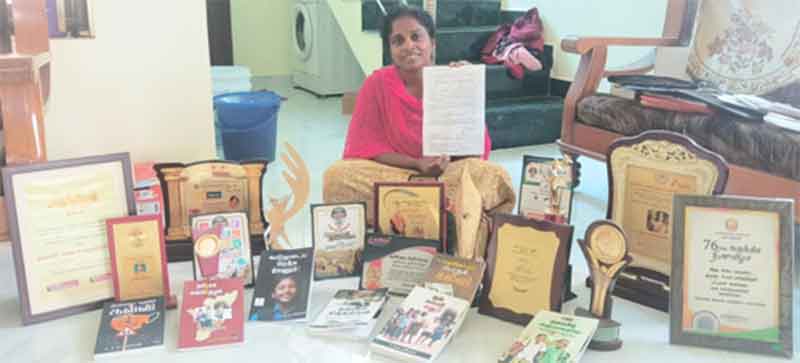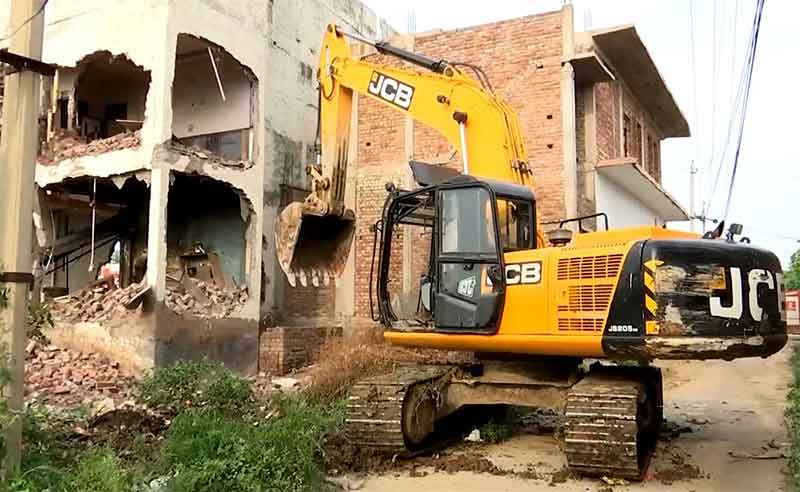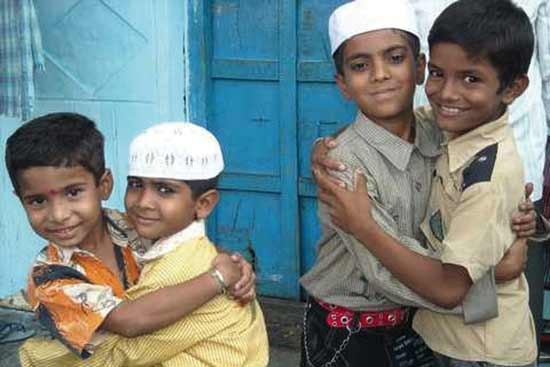
The Youth Congress activists in Kerala have been protesting since December to draw attention to the alleged attacks on its workers by police and activists of the youth outfit of the ruling CPI(M) during the state government’s Nava Kerala Sadas programme, led by Chief Minister Pinarayi Vijayan.[1]
On January 9, 2024, Kerala Youth Congress state president Rahul Mamkoottathil, in connection to an FIR, registered for participating in the Secretariat march in December 2023 was arrested from his residence and was remanded for 14 days judicial custody. He was produced before the Thiruvananthapuram Session Court on January 10, 2024. The court rejected the bail application and remanded Rahul for two weeks of judicial custody till 22nd January 2024.[2]
On 10 January 2024, Kerala Youth Congress members organised a march to the Kerala Secretariat to protest against the arrest of Rahul Mamkoottathil. The March was launched by MLA Shafi Parambil. Near the Secretariat, the police attacked the protestors by using water cannons to disperse the protestors. After that, the protestors sat on the road, raising slogans against police and state government. Then, the police restored to lathi charge on the protestors.[3]
On January 12, Cantonment police registered a case against Shafi Parambil and Youth Congress district leaders Sudheer Shah, Nemom Shajeer, Saju Amardas, Manoj Mohan and 150 identifiable people. According to the FIR, the activists, who took out a jatha from Palayam side in front of the secretariat, raised slogans and disrupted the movement of pedestrians and vehicles. The police used water cannons after a march by the Youth Congress.[4]
On January 12, 2024, Youth Congress activists marched to a collectorate march in Kannur; during the march, police attacked the protestors, in which Youth Congress district president M P Praveen suffered brain injuries, according to medical records at the Government Medical College in Alappuzha. A picture of Praveen breaking the lathi of the police when he was hit on the head was circulating in the Media. Mr. Praveen fell to the ground and was surrounded by about 10 policemen and was beaten up. There is also a serious injury to the neck in the lathicharge. Praveen was shifted to a private medical college in Thiruvalla for specialist treatment. Youth Congress district general secretaries Megha Ranjith and Saranya Sreekumar, who were seriously injured in the police Lathicharge, have also been admitted to a private medical college in Thiruvalla. Both were hit on the head and neck. According to the MRI scan report, the disc in Megha’s neck has been pushed out. Azhikode Mandalam secretary Riya Narayanan, who was also injured in the police violence during the Youth Congress collectorate march she was forcibly dragged into the vehicle by the police during the Youth Congress collectorate march in Kannur. The police stomped on her hair, and they dragged her to the vehicle.[5] The Police used water cannons during the Youth Congress march in Kottayam near the SP Office, and there was the use of lathi charges to disperse the protesting Youth Congress members.
On January 13, 2024, police used water cannons to disperse youth congress activists who staged a protest in front of the police commissioner’s office in Kochi against the arrest of Rahul Mamkootathil. The march was organised under the aegis of the YC Ernakulam district committee. District president Sijo Joseph led the march. Inaugurating the march, Hibi Eden, MP, accused the State government of double standards towards protests organised by the youth outfits.[6]
On January 13, 2024, during the Youth Congress protest in Palakkad, the police attacked using water cannons and lathicharge.[7] On January 15, 2024, in Alappuzha, police attached the protestors of the youth congress during their protest for the release of Rahul Mamkootahil.[8] On January 16 2024, Rahul was recorded in three more protest-related cases.[9] On January 16, 2024, the march to the Collectorate in Kozhikode was attacked by police; the police personnel resorted to using water cannons After the protestors refused to disperse. The police resorted to using tear gas. In Adoor, a clash erupted between the Police and the protestors after the Youth Congress workers climbed over the barricades, and police resorted to lathicharge to disperse the protestors.[10]
The Right to protest is recognized under several international instruments, including:
I. The International Covenant on Economic, Social and Cultural Rights (Article 8),
II. Article 5 (a) of the Declaration on Human Rights Defenders 1998 states that “For the purpose of promoting and protecting human rights and fundamental freedoms, everyone has the right, individually and in association with others, to meet or assemble peacefully”.
The right to exercise freedom of speech and expression is enshrined under Article 19 (a) of the Indian Constitution. The right to freedom of opinion and expression encompasses three different aspects:
I. The right to hold opinions without interference;
II. The right to access to information, and
III. The right to impart information and ideas of all kinds.
Basic principles on the Use Of Force And Firearms By Law Enforcement Officials in 1990, Cause 4 states that:-
“Law enforcement officials, in carrying out their duty, shall, as far as possible, apply non-violent means before resorting to the use of force and firearms. They may use force and firearms only if other means remain ineffective or without any promise of achieving the intended result.”
Kerala Police Manual 1970[11] lays down a step-by-step procedure to deal with unlawful assemblies, which was not followed by the police before they resorted to lathicharge.
The use of brutal force on the protestors, registration of FIR based on fabricated charges, and detention and arrest of protestors is an act of reprisal against their activism. There must be an independent inquiry into the actions of the police, and injured protestors must be rehabilitated.
Ashish Reddy is an Advocate and legal researcher who is currently serving as a Regional Coordinator of Human Rights Defenders Alert (HRDA)for southern India. He is also a member of the All India Network of Individuals and NGOs working with State and National Human Rights Institutions (AiNNI).
[1] PTI, “Kerala Youth Congress Prez Warns of Intensifying Protests against Vijayan Govt,” Deccan Herald, accessed January 19, 2024, https://www.deccanherald.com/india/kerala/kerala-youth-congress-prez-warns-of-intensifying-protests-against-vijayan-govt-2854245.
[2] “Youth Congress President Rahul Mamkoottathil Arrested for Secretariat Protest,” Onmanorama, accessed January 19, 2024, https://www.onmanorama.com/news/kerala/2024/01/09/youth-congress-rahul-mamkootathil-arrest-secretariat-march.html.
[3] Express News Service, “Youth Congress March after Arrest of Rahul Mamkoottathil Turns Violent in Thiruvananthapuram,” The New Indian Express, January 10, 2024, https://www.newindianexpress.com/kerala/2024/Jan/10/youth-congress-march-after-arrest-of-rahul-mamkoottathil-turns-violent-in-thiruvananthapuram-2649762.html.
[4] SNS, “Kerala Youth Congress Organises Protest March to Secretariat,” The Statesman (blog), January 10, 2024, https://www.thestatesman.com/india/kerala-youth-congress-organises-protest-march-to-secretariat-1503258336.html.
[5] The Hindu Bureau, “Youth Congress Alleges Police Brutality during Protest in Kannur,” The Hindu, January 12, 2024, sec. Kerala, https://www.thehindu.com/news/national/kerala/youth-congress-alleges-police-brutality-during-protest-in-kannur/article67734312.ece.
[6] The Hindu Bureau, “Police Fire Water Canon at YC Protest March,” The Hindu, January 13, 2024, sec. Kochi, https://www.thehindu.com/news/cities/Kochi/police-fire-water-canon-at-yc-protest-march/article67737542.ece.
[7] “Police ‘brutally Attacked’ Young Girl in Kannur Protest, Claims Kerala Congress,” India Today, accessed January 19, 2024, https://www.indiatoday.in/india/story/kerala-secretariat-march-violence-youth-congress-state-president-arrested-young-girl-attacked-vd-satheesan-2488237-2024-01-13.
[8] PTI, “Kerala Youth Cong Protests Continue against Arrest of Its State President,” Deccan Herald, accessed January 19, 2024, https://www.deccanherald.com/india/kerala/kerala-youth-cong-protests-continue-against-arrest-of-its-state-president-2849398.
[9] “Rahul Mamkootathil Gets Bail in 2 out of 3 New Cases Slapped on Him by Police,” accessed January 19, 2024, https://www.onmanorama.com/news/kerala/2024/01/16/police-arrests-rahul-mamkootathil-for-three-new-cases.html.
[10] “Mamkootathil’s Arrest: YC Protests Turn Violent in Several Parts of State, Youth Congress Protest, Kerala, Rahul Mamkootathil’s Arrest, Congress, Cpm, Kerala Police,” accessed January 19, 2024, https://english.mathrubhumi.com/news/kerala/youth-congress-protests-turn-violent-in-kerala-1.9243949.
[11] “i) The police must invariably secure the presence of a Magistrate where it anticipates a breach of peace.
(ii) The decision to use force and the type of force to be used is to be taken by the Magistrate.
(iii) Once the order for the use of force is given by the Magistrate, the extent of force to be used will be determined by the seniormost police officer.
(iv) The extent of force used must be subject to the principle of minimum use of force.
(v) Use of force should be progressive — i.e. firearms must be used as a last resort if tearsmoke and lathi-charge fail to disperse the crowd.
(vi) Common tearsmoke which causes no bodily injury and allows recovery of affected persons should be used.
(vii) When the crowd is large and the use of tearsmoke is likely to serve no useful purpose, the police may resort to lathi-charge.
(viii) Lathi-charge can only begin if the crowd refuses to disperse after suitable warning.
(ix) Clear warning of the intention to carry out a lathi-charge should be given through a bugle or whistle call in a language understood by the crowd. If available, a riot flag must be raised. If the police officer-in-charge is satisfied it is not practical to give a warning, she/he may order a lathi-charge without warning.
(x) Lathi-blows should be aimed at soft portions of the body and contact with the head or collarbone should be avoided as far as practicable.
(xi) The lathi-blows must not cease until the crowd is completely dispersed.
…(xx) All help should be rendered to convey the wounded to the hospital…”















































